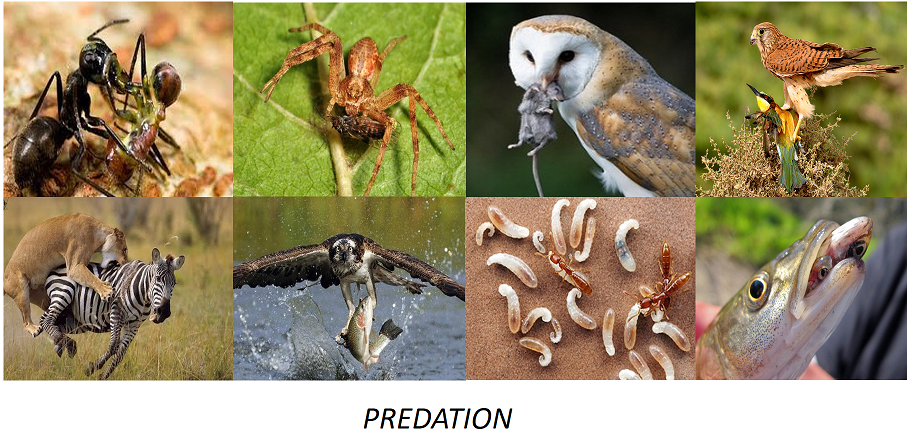Predation is an important, biological interaction, where one organism kills the other organism and eats it. In other words, it is an interaction between the predator and the prey. Mainly this process tends to maintain the flow of energy from one organism to another one. The prey has to suffer the loss of energy, and fitness, whereas there is the commensurate gain of energy for the predator. After capturing the prey, the predator handles it very carefully, as the prey may be fatal to the predator. It involves the carnivores, and some other interactions such as the symbiotic mutualism, and the parasitism.

Types of Predation
The main types of predation are herbivory, carnivory, and parasitism.
Carnivory
Carnivorous predators kill their prey and eat it. The most common perception of the carnivory includes the large animal that hunts the small animal such as the tiger eats the rabbits or deer. Carnivores are spread throughout the world and they are found in a variety of sizes.
Herbivory
The herbivores consume the autotrophs, such as photosynthetic algae, and the plants. All of the herbivores’ interactions do not lead to the death of the plants. Additionally, it can be beneficial for the plants as well. Herbivores cause the dispersion of the fruit seeds over the vast areas. In the digestive tract of the herbivores, the tough coatings are removed. The dung of the herbivores fertilizes the soil, and in this, the ideal conditions for seed germination are created.
Parasitism
Parasitism is also a well-known form of predation where the essential nutrients are supplied to the parasite for its survival and reproduction. The host is responsible for supplying all of these nutrients to the parasites. Here the host has to suffer the energy losses. However, all of the hosts are not killed in this type of predation interaction. In the majority of the cases, the parasite is much smaller than the host.
Adaptive Behavior of Prey
The sense of the predators is adapted in various ways, for facilitating the hunting behavior. The predation involves the pursuit, capturing, and killing of the animals, to get the food. A powerful selective effect is exerted by the predator. The prey may develop the antipredator adaptations, such as alarm calls, camouflage, and the warning coloration. Sometimes, the predator and the prey may undergo the evolutionary arms race, which is the cycle of the adaptations, and the counter adaptations. Also, the predation has been the major driving tool, for the evolution.